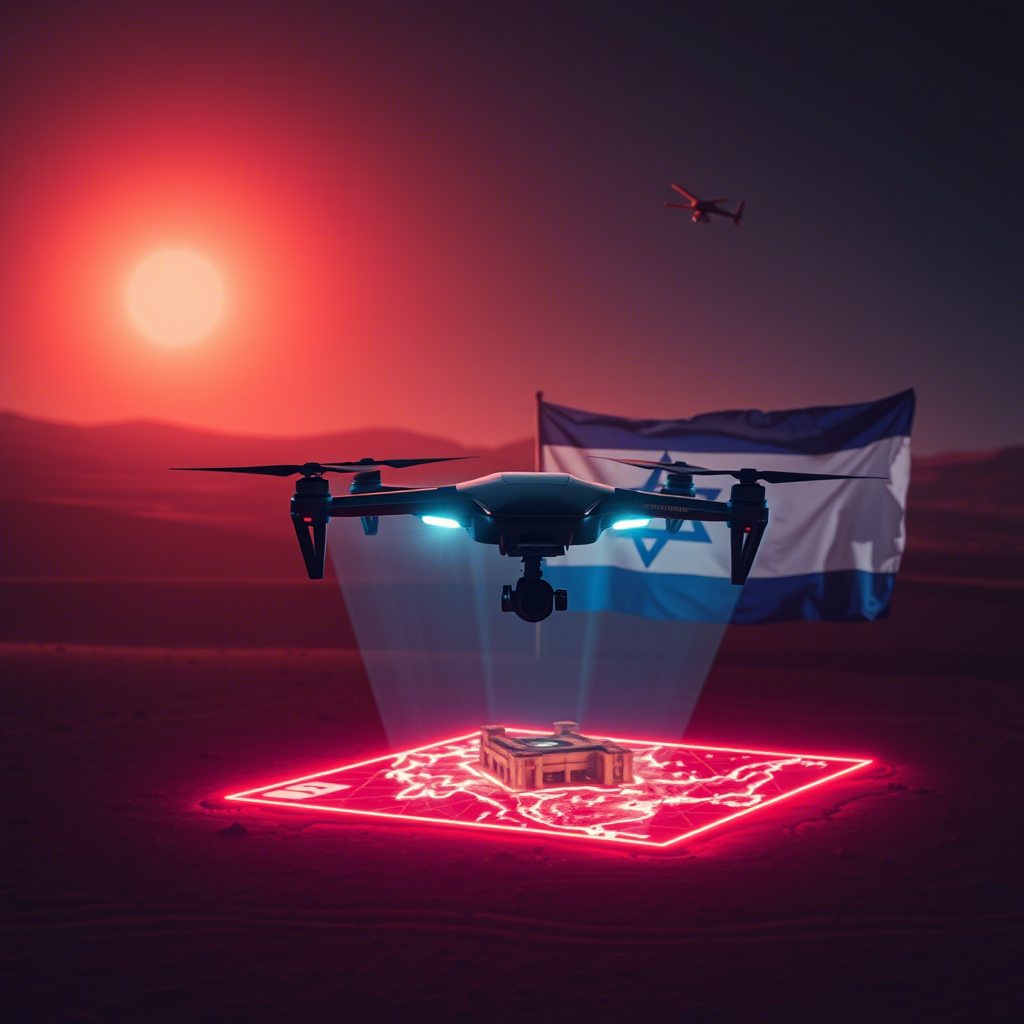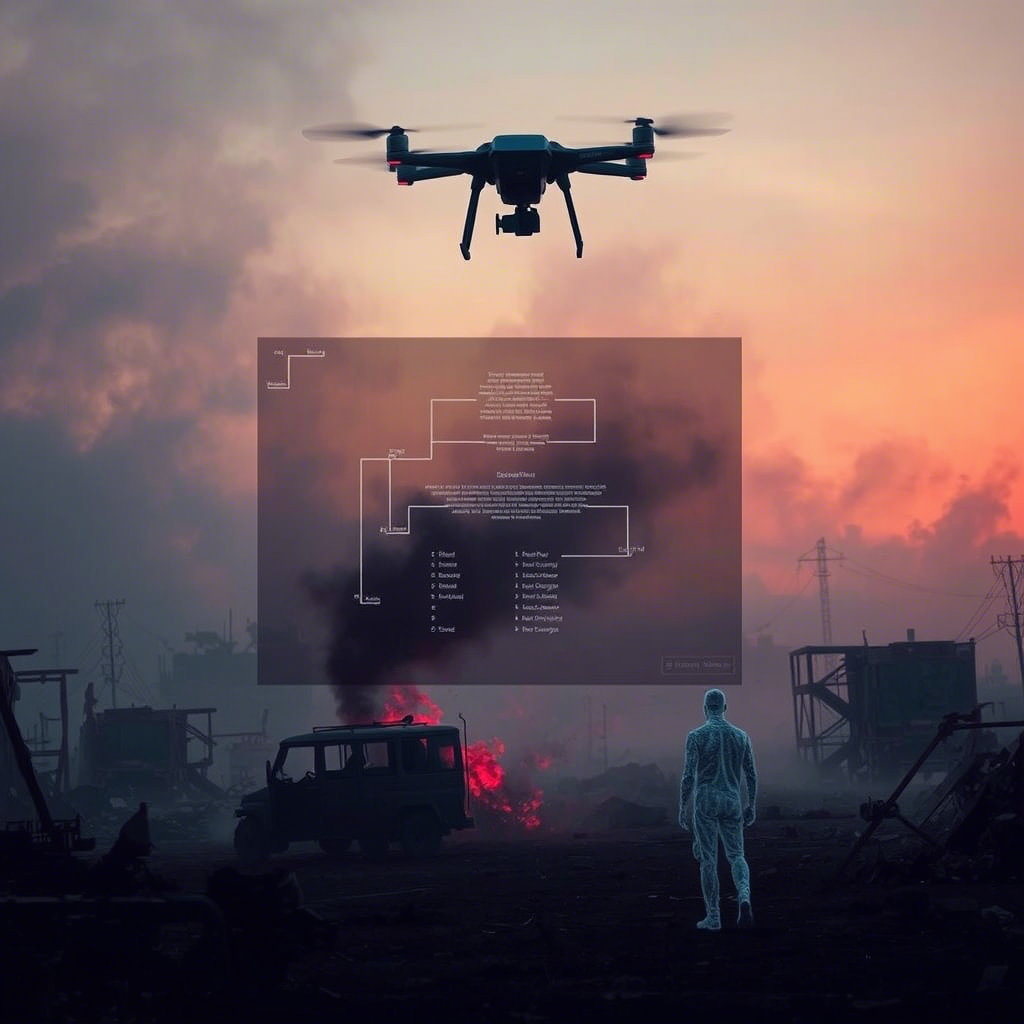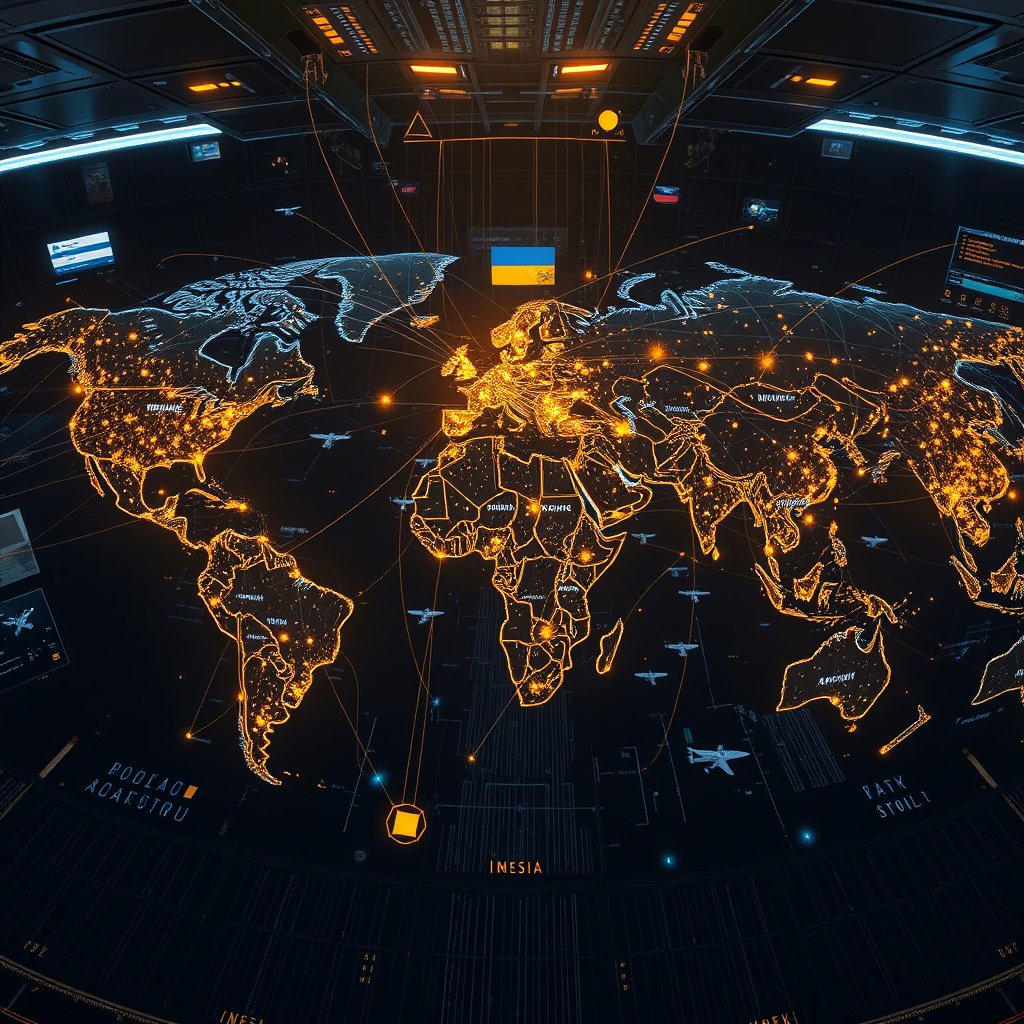In the pre-dawn stillness of June 2025, a clandestine Iranian facility, suspected to be a linchpin in its nuclear ambitions, was obliterated in a strike so precise it seemed almost surgical. No fighter jets roared overhead. No missile trails scarred the sky. Yet the target was reduced to rubble with clinical efficiency. Whispers among global military analysts pointed to Israel, a nation that has quietly mastered the art of artificial intelligence in warfare, orchestrating a new kind of combat—one led not by soldiers, but by code.
Half a world away, in the war-torn fields of Eastern Europe, Ukraine unleashed its own technological marvel: the “spider web,” a fleet of AI-coordinated drones that danced across the sky with uncanny precision. Moving as if guided by a single mind, they struck Russian radar systems, ammunition depots, and convoys with devastating accuracy, outmaneuvering defenses that cost billions.
This wasn’t just warfare—it was a glimpse into the future, where battles are won not by sheer firepower, but by the brilliance of algorithms.

Welcome to the Age of Algorithmic Warfare, where the battlefield is no longer defined by tanks or troops, but by lines of code humming in data centers. Ukraine and Israel, two nations under relentless pressure, are rewriting the rules of conflict, proving that in modern warfare, the sharpest weapon is intelligence itself.
The Dawn of a New Battlefield
War has always been a crucible for innovation. The longbow toppled knights, gunpowder reshaped empires, and nuclear weapons redefined global power. But today’s revolution is quieter, more cerebral, and infinitely more complex. Artificial intelligence (AI) is no longer a supporting actor in military operations—it’s taking center stage, shifting from aiding decisions to making them.
Gone are the days when AI was confined to analyzing satellite imagery or crunching logistics data. Now, it identifies targets, plots attack routes, commands drone swarms, assesses collateral risks, and adapts plans in real time—all faster and often more accurately than any human could.
This is the paradigm shift unfolding in Ukraine and Israel, where necessity has birthed innovation, turning conflicts into testing grounds for the future of war.In this new era, victory doesn’t belong to the nation with the most soldiers or the biggest arsenal. It belongs to the one with the smartest code.

Ukraine’s “Spider Web”: The Swarm That Changed Everything
Since Russia’s invasion in 2022, Ukraine has been a nation under fire, forced to innovate or perish. Outgunned and outnumbered, it turned to technology, transforming itself into a laboratory for cutting-edge warfare. By late 2024, it unveiled its most revolutionary weapon yet: the “spider web” drone swarm, a network of small, AI-driven drones that operate with chilling coordination.
Unlike traditional drone strikes, where each unit is piloted individually, the spider web is a masterpiece of swarm intelligence. Powered by neural networks, these drones communicate in real time, adapting to threats and reshaping their formations mid-flight. If one drone is downed, the others instantly adjust. If a target moves, the swarm recalculates its approach. It’s as if the drones share a collective brain, learning from each mission to become smarter and deadlier.What makes the spider web so revolutionary? Three key factors:
Decentralized Command: With no single control hub, the swarm is immune to traditional jamming techniques, making it nearly impossible to disrupt.
Predictive Precision: By analyzing past missions and enemy patterns, the AI anticipates movements, striking with surgical accuracy.
Affordable Lethality: Built with locally sourced and 3D-printed components, these drones are cheap yet capable of outsmarting Russia’s costly air defenses.

In a single operation near Kharkiv, the spider web dismantled a Russian anti-aircraft unit in under 30 minutes. Russian troops, bewildered by the invisible, relentless assault, described it as “fighting ghosts.” Ukraine’s innovation proved a profound truth: in the age of AI, intelligence trumps firepower, and a small, scrappy nation can outmaneuver a superpower with the right code.
Israel’s Algorithmic Arsenal: Precision Redefined
While Ukraine fights for survival, Israel has turned its technological prowess into a weapon of deterrence. The June 2025 strike on Iran’s suspected nuclear facility was a masterclass in AI-driven warfare. No human pilots were involved. No traditional missiles were detected. Instead, the operation relied on a symphony of satellite data, AI surveillance, and autonomous munitions, orchestrated with machine-like precision.
Here’s how Israel pulled it off:
Real-Time Intelligence: AI sifted through terabytes of satellite imagery and signal data to pinpoint the facility’s location and activity.
Predictive Planning: Machine learning models calculated the optimal strike window to minimize civilian risk.
Micro-Drone Reconnaissance: Tiny drones, deployed days earlier, confirmed the target’s viability with live feeds.
Smart Munitions: AI-guided weapons adjusted their trajectories mid-flight, ensuring pinpoint accuracy.

The result? The facility was destroyed without touching nearby structures or harming a single civilian. This wasn’t just a military strike—it was algorithmic surgery, a demonstration of warfare so precise it felt almost sterile.
For Israel, it sent a message to adversaries: its technology sees all, strikes anywhere, and leaves no trace. For the world, it showcased how AI can redefine military dominance, not through brute force, but through calculated, machine-guided precision.
The Invisible War: Code as the New Artillery
Beyond drones and missiles, the true battleground of modern warfare is invisible—a realm of cyberattacks, electronic jamming, and sensor manipulation. Here, AI is the ultimate weapon, turning data into a battlefield where victories are won before the first shot is fired.
Cyber Warfare: AI algorithms detect intrusions, deploy countermeasures, and evolve malware faster than any human hacker could. In Ukraine, AI-driven cyber defenses have thwarted Russian attempts to cripple critical infrastructure.
Signal Intelligence (SIGINT): Machine learning sifts through billions of intercepted communications, identifying threats in seconds. Ukraine uses AI to track Russian troop movements by analyzing social media metadata and battlefield chatter.
Electronic Warfare: AI jams enemy radar and communications while shielding friendly signals. Israel reportedly uses AI to predict missile launches by analyzing heat signatures and seismic data in hostile territories.

This war behind the war is where AI shines brightest. It’s a domain where the enemy doesn’t see the attack coming—because the weapon is a stream of code, not a missile.
The Ethical Quagmire: Who Answers for AI’s Decisions?
As AI takes the reins, it raises questions that haunt military strategists and ethicists alike. When an AI-guided drone misidentifies a civilian bus as a military convoy, who is to blame? The coder who wrote the algorithm? The commander who deployed it? Or the machine itself?This isn’t a thought experiment.
In 2023, an AI-powered loitering munition in North Africa, operated by a private military group, mistakenly struck a civilian convoy, killing dozens. The tragedy sparked global outrage, but no one was held accountable, exposing a gaping hole in the ethics of autonomous warfare.
Key concerns include:
Opaque Algorithms: Many AI systems operate as “black boxes,” making decisions in ways even their creators can’t fully explain.
Dehumanized Combat: By removing human judgment, war risks becoming a cold calculation, where lives are reduced to data points.
Unintended Escalation: AI’s split-second responses to perceived threats could trigger conflicts before humans can intervene.

The United Nations has pushed for regulations on autonomous weapons, but progress is glacial. Meanwhile, global powers like the U.S., China, and Russia pour billions into AI weaponry, fueling a digital arms race that outpaces ethical oversight. As machines gain more autonomy, the line between tool and decision-maker blurs, forcing us to confront a chilling question: what happens when war becomes too smart for humans to control?
A Global Shift: The Algorithmic Arms Race
If the Cold War was defined by nuclear stockpiles, the 21st century is defined by algorithms. Ukraine and Israel have shown that AI is a great equalizer, allowing smaller nations to punch above their weight. With modest investments, any country—or non-state actor—can build drone swarms, cyber armies, or surveillance networks. You don’t need aircraft carriers or vast armies—just skilled coders and robust data.
The implications are staggering:
Code as Deterrence: Nations may hesitate to attack if they fear their systems could be paralyzed by AI-driven cyberattacks.
The Privatization of War: Commercial AI tools are increasingly accessible, empowering private groups and blurring the line between state and non-state conflict.
Digital Proxy Wars: Superpowers may wage war through AI-armed proxies, avoiding direct confrontation while escalating tensions in the shadows.In this new world, dominance is no longer about controlling territory—it’s about controlling data. The nations that master AI will shape the future of warfare, rewriting the balance of power in real time.

The Future Is Written in Code
The battlefields of Ukraine and Israel are more than conflict zones—they are windows into the future of war. From Ukraine’s ghostly drone swarms to Israel’s surgical strikes, AI is transforming combat into a game of precision, speed, and intelligence. The wars of tomorrow won’t begin with the rumble of tanks or the scream of jets—they’ll start with the quiet hum of servers in a data center.
This Age of Code offers immense promise: fewer casualties, shorter conflicts, and unparalleled precision. But it also carries risks—unaccountable decisions, dehumanized warfare, and a world where conflicts escalate faster than humans can react. The generals of the future may not wear uniforms; they may sit at keyboards, crafting algorithms that decide who wins and who dies.

In this new era, one truth is clear: the nation that writes the best code will hold the ultimate advantage. As Ukraine and Israel have shown, the future of warfare isn’t forged in fire—it’s built in lines of code, where every algorithm is a weapon, and every data point is a battlefield.
Copyrights: Dhaka.ai



